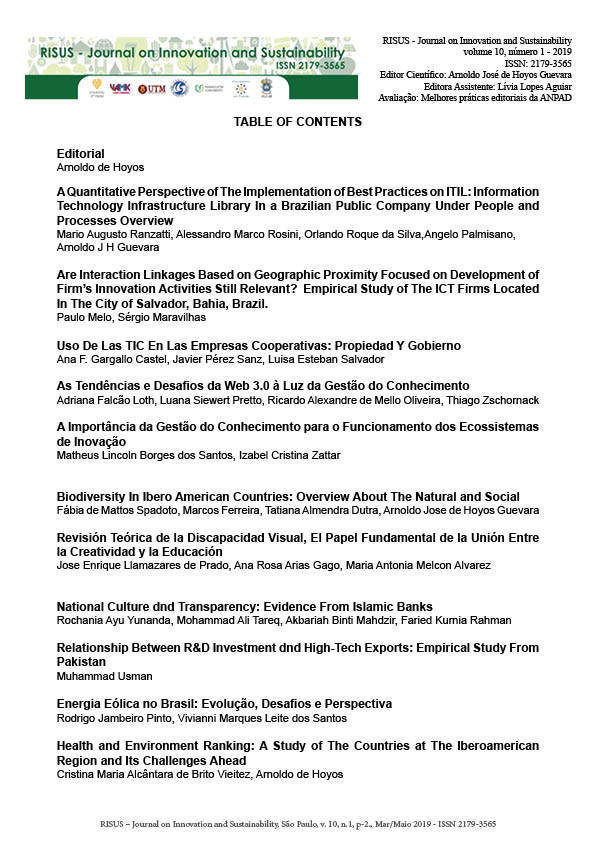ARE INTERACTION LINKAGES BASED ON GEOGRAPHIC PROXIMITY FOCUSED ON DEVELOPMENT OF FIRM’S INNOVATION ACTIVITIES STILL RELEVANT? EMPIRICAL STUDY OF THE ICT FIRMS LOCATED IN THE CITY OF SALVADOR, BAHIA, BRAZIL
DOI:
https://doi.org/10.24212/2179-3565.2019v10i1p12-19Keywords:
Geographic Proximity, Interaction Linkages, ICT sectorAbstract
The current paper investigates the role of interactions based on geographic proximity for the development of firm’s innovation activities. Many authors such as Porter (1998) argued that the formation of interactive linkages based on geographic proximity seem to facilitate the search for new knowledge, information and technologies able to impact the development of innovation activities inside the organization generating competitive advantages. To perform this research, the authors decided to investigate the interaction behavior of micro and small firms in the information, communication and technology (ICT) sector located inside and outside the technological park in the city of Salvador, State of Bahia, Brazil. The findings showed in general that firms which had innovation activities, also had some kind of interactions with other agents, confirming that innovation is not a solitaire phenomenon. However, the empirical evidences did not confirm that interactions based on geographic proximity were relevant for the development of firms’ innovative activities. The study showed that, nowadays, firms use to interact with others regardless of whether they are geographically close or not. This may happen due to the fact that with the facilitation and the intensive use of new communication technologies have helped firms to reach partners wherever they are located at. Also, the study may suggest that arguments such as the role of geographic proximity and business agglomerations based on spatial proximity may need to be revisedDownloads
Published
2019-03-12
Issue
Section
Papers
License
This Journal is licensed under a Creative Commons Attribution-Non Commercial-No Derivers 4.0 International license.
1.The author (s) authorize the publication of the article in the journal;
2.The author (s) warrant that the contribution is original and unpublished and is not in the process of being evaluated in other journal (s);
3. The journal is not responsible for the opinions, ideas and concepts emitted in the texts, as they are the sole responsibility of its author (s);
4. The editors are entitled to make textual adjustments and to adapt the articles to the standards of publication.


